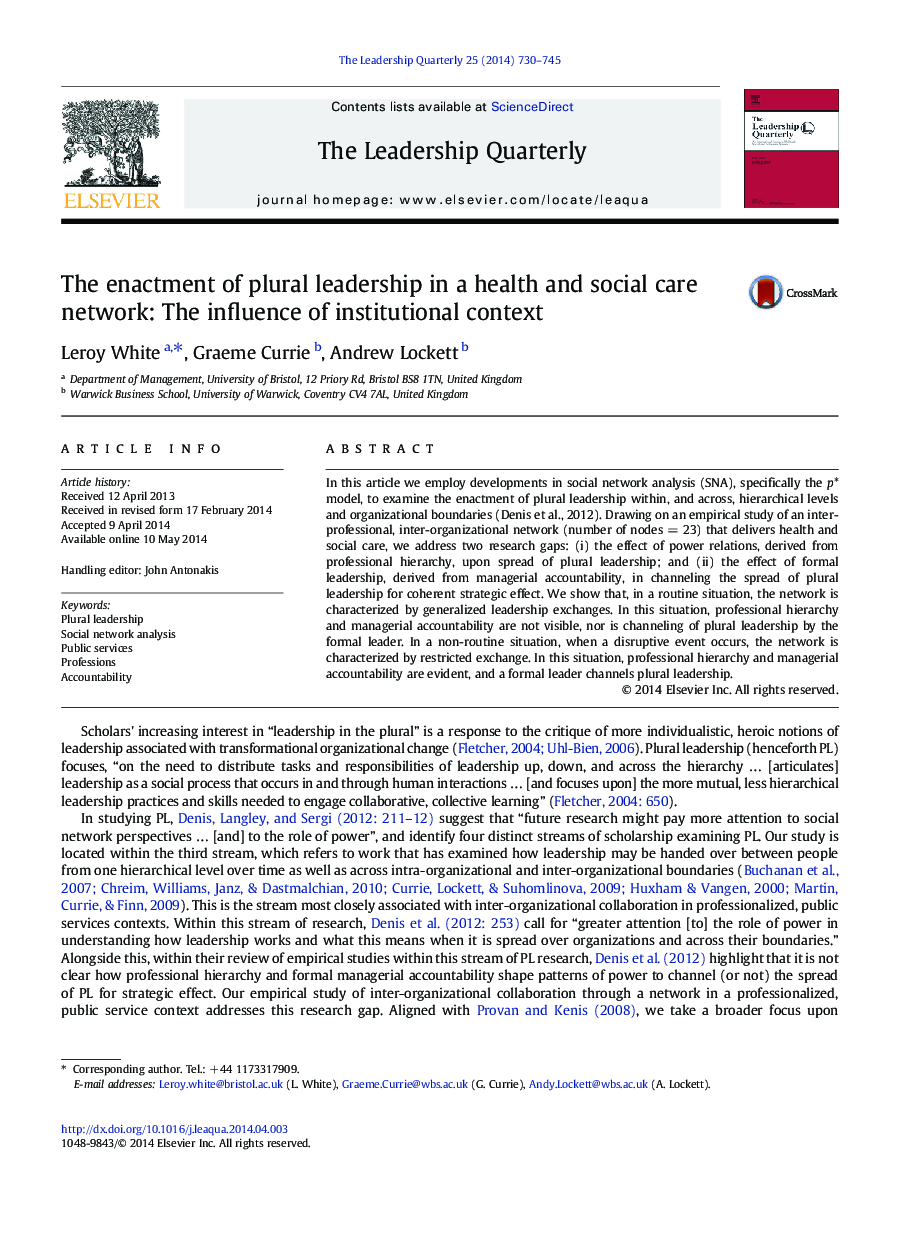| Article ID | Journal | Published Year | Pages | File Type |
|---|---|---|---|---|
| 887830 | The Leadership Quarterly | 2014 | 16 Pages |
In this article we employ developments in social network analysis (SNA), specifically the p* model, to examine the enactment of plural leadership within, and across, hierarchical levels and organizational boundaries (Denis et al., 2012). Drawing on an empirical study of an inter-professional, inter-organizational network (number of nodes = 23) that delivers health and social care, we address two research gaps: (i) the effect of power relations, derived from professional hierarchy, upon spread of plural leadership; and (ii) the effect of formal leadership, derived from managerial accountability, in channeling the spread of plural leadership for coherent strategic effect. We show that, in a routine situation, the network is characterized by generalized leadership exchanges. In this situation, professional hierarchy and managerial accountability are not visible, nor is channeling of plural leadership by the formal leader. In a non-routine situation, when a disruptive event occurs, the network is characterized by restricted exchange. In this situation, professional hierarchy and managerial accountability are evident, and a formal leader channels plural leadership.
